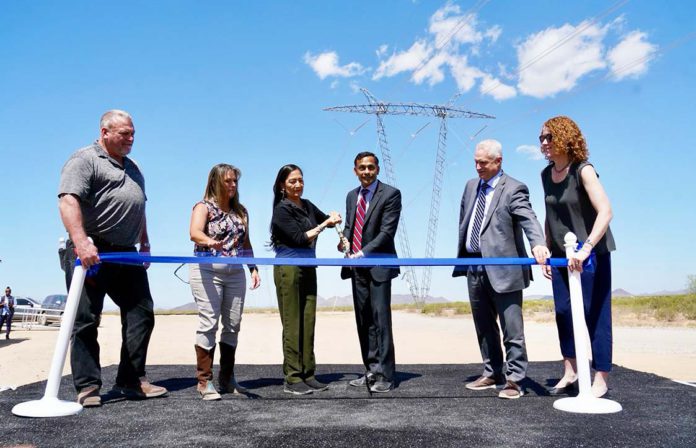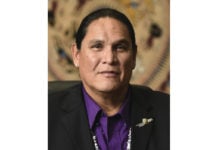
PARKER, AZ – Secretary of the Interior Deb Haaland visited Arizona last week, where she highlighted the Biden-Harris administration’s all-of-government approach to developing a robust and sustainable clean energy economy and commitment to strengthening Indian Country.
In La Paz County, Secretary Haaland and Bureau of Land Management (BLM) Director Tracy Stone-Manning joined local leaders to celebrate clean energy going into the grid from the newly completed Ten West Link transmission line. During the event, Secretary Haaland highlighted the Biden-Harris administration’s broader efforts to accelerate transmission buildout that will lower consumers’ energy costs, prevent power outages in the face of extreme weather and create good-paying union jobs. Earlier this month, the Department announced that the BLM has now permitted more than 25 gigawatts of clean energy projects, enough to power more than 12 million homes. This includes solar, wind and geothermal projects, as well as gen-tie lines on public lands that are essential for connecting clean electricity projects on both federal and non-federal land to the grid.
Ten West Link is a 500kV high voltage transmission line that will add significant new power grid infrastructure connecting Southern California with the rapidly growing Desert Southwest region. The BLM approved the project in November 2019, authorized construction in July 2022, and broke ground in January 2023. The Ten West Link route traverses a region with some of the highest potential for utility-scale solar photovoltaic energy development in the nation.
Secretary Haaland, Assistant Secretary for Indian Affairs Bryan Newland, and Bureau of Reclamation Commissioner Camille Calimlim Touton also traveled to the Colorado River Indian Tribes (CRIT) community, which stretches along the Colorado River on both the Arizona and California side. They joined tribal, federal, state and local leaders to commemorate a historic water rights agreement between the Department, CRIT and the State of Arizona that will – for the first time – give the tribes the ability to lease, exchange or store a portion of its Arizona Colorado River water entitlement. The community includes almost 300,000 acres of land, with the river serving as the focal point and lifeblood of the area.
The Colorado River Indian Tribes Water Resiliency Act of 2022 – which paved the way for this agreement – is the product of many years of diligent negotiations among the tribe, the state, and non-Indian water users and reflects the federal government’s commitment to tribal self-determination and tribal sovereignty.
The visit underscored the Department’s commitment to strengthening Indian Country with significant resources through President Biden’s Investing in America agenda, which provides more than $13 billion directly to tribes across the country with tribal communities eligible for billions more in much-needed investments. That includes $2.5 billion to implement the Indian Water Rights Settlement Completion Fund, which is delivering long-promised water resources to tribes, certainty to their non-Indian neighbors, and a solid foundation for future economic development for entire communities dependent on common water resources.













































